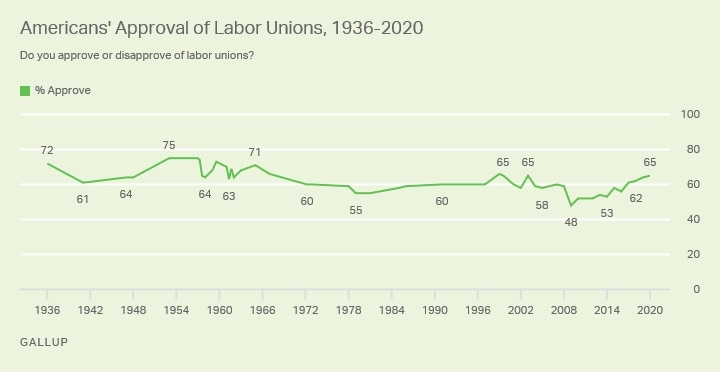
Updated (09/09/2020) This morning, in the midst of the COVID-19 pandemic, social unrest, and record high U.S. unemployment, the Gallup organization reported that approval of labor unions increased slightly year-over-year and holds steady at 65%.
In past years, we have noted a demonstrated inverse correlation between the unemployment rate and union approval. In other words, as unemployment rises, approval of labor unions typically tends to fall. Not this year!
According to Gallup, this new data point could be bucking the trend because the American public is focusing on issues other than the economy.
What are Americans focused on? Gallup reports that overall satisfaction among Americans remains at historical lows (only 13% of Americans are satisfied with the way things are going). Simply put, public health and larger social issues are the main focus these days – and for good reason.
A Change in Direction Would be Welcomed by Most Ameircans
At Chessboard, we monitor and analyze the political landscape from the perspective that changes in political direction typically also result in changes in national labor policy.
If the November election produces a change in party control within Washington, we will likely return to a regulatory environment that is more supportive of organized labor. And, in the extreme, we could see passage of pro-labor legislation such as the PRO Act (Protecting the Right to Organize).
Through it all, we will be here to help you make sense of, prepare for, and respond to any changes in labor policy. Happy Labor Day!
